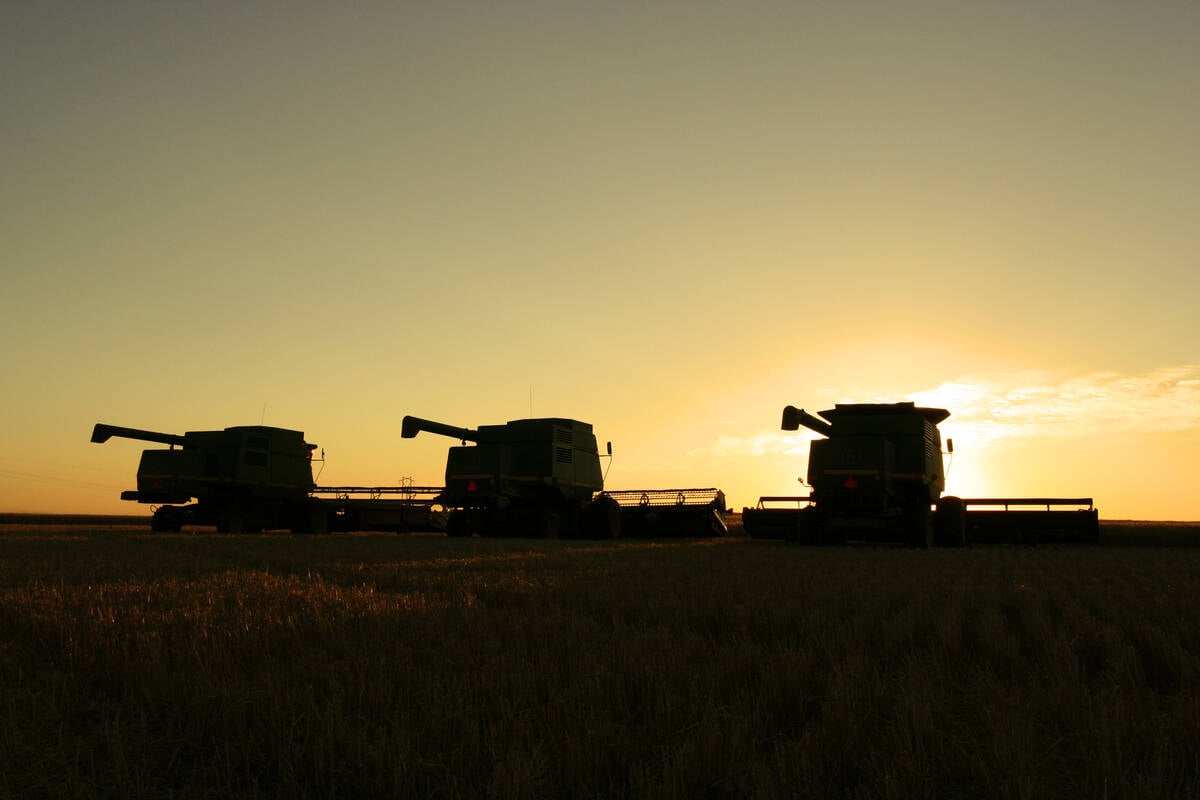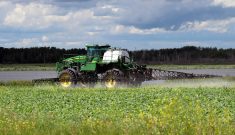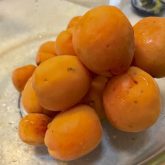Let’s plant some edible snap peas and shelling peas. Plus — a bit of this and a bit o’ that. Gardeners phone, others write and I always appreciate face-to-face meetings. Here’s one gardener’s experience with Epsom salt. Tells me he sprays tomato and pepper plants at blossoming time with a weak solution of Epsom salt and water to correct a magnesium deficiency. Personally on a separate day I also do a light misting of pure apple juice diluted 50/50 with rainwater on tomatoes and peppers. This helps prevent blossoms from dropping off and improves pollination.
Yellowing of lower leaves on tomato and pepper plants can sometimes be a sign of over-acidic soil in which case a soil test is recommended to confirm. This can be corrected by applying some dolomite lime from a garden centre over soil and working it in (a source of calcium and magnesium).
Another gardener reports dramatic yields from a drink of skim milk given to his tomato plants using reconstituted powdered skim milk and water. Each tomato plant receives four cups of such skim milk when plants begin to blossom. Avoid using 2% or whole milk as tomato plants can’t handle butterfat. You might want to experiment giving pepper plants a one-time drink of skim milk as well and comparing results with peppers that received none.
Read Also

BASF donates seed, inputs to community growing projects
Growers or retailers interested in nominating a community project for the Fields of Purpose program in 2026 can contact their local BASF representative.
It’s tip-of-the-hat time when I again like to say hello, howdy and welcome to everyone throughout my Grainews family. In western societies during the 19th and early 20th centuries a hat tip was a common non-verbal greeting between acquaintances and friends while walking or meeting at a social gathering. The term ‘hat tip’ was often abbreviated and rose to prominence as “HT,” “H/T” or “h/t.” Two men (female hat tipping was rare) would lift or tip their hat to each other, rather than exchange words of greeting. Later it was introduced that the hat tip be used for greeting a lady or stranger. Thanks again for coming by.

An edible snap pea variety
Take a look at the picture of Cascadia in flower and pods forming on this page. This delicious snap pea won the Royal Historical Society Award of Garden Merit. The dark-green pods are crunchy, juicy, sweet and a nice size at nine cm (3-1/2 inches) long on vines that grow to only 60 cm (24 inches). When picked early — after two months growth or less — Cascadia produces excellent edible snow peas and later can be left to size up for shelling when mature. You can use tree twigs or small branches to support the short vines.
Alderman has exceptional flavour
If you’re seeking a pea variety that grows quite tall on a trellis, wire or fence — 2.5 metres (eight feet) — then Alderman will meet your need. Huge pods with eight or nine peas each have a long harvest window within 2-1/2 months or less and are easy to pick and shell with little or no bending. Make sure the pods are well filled first. See picture on this page. Alderman is sometimes known among some pea growers as Tall Telephone.
Seeds for planting of peas mentioned and other pea varieties plus a free 2022 gardening guide catalogue are available from West Coast Seeds, Delta, B.C., www.westcoastseeds.com — phone toll free 1-888-804-8820.

Things to know about growing
Peas are a cool-weather crop that can withstand some frost. Sunny spots will be the first places to thaw in spring, so get peas into soil as soon as possible. Peas planted in the shade will take longer to grow and the sugar content will be low. Edible-podded peas prefer cool weather and moist soil. We live in a northern-tier country so peas can be grown almost all summer in some parts of Canada. Try planting peas every three or four weeks ’til end of August for a fall crop. Pea plants growing in areas under relentless heat and direct sunshine for long periods will benefit from thick mulches at ground level.
If your soil is less than perfect you’ll want to build its nutrient value. A good motto to garden by is: the healthier the soil — the healthier your vegetables. The best method to improve any type of garden soil is by incorporating organic matter into it such as all discarded veggie and fruit parts from the kitchen, whole and shredded dry leaves, chopped old hay, green and dried grass clippings that have never been sprayed with any type of chemicals to control weeds. Organic matter will serve as a glue, holding particles together when added to sandy soils. By contrast it will wedge in between particles loosening and lightening clay soils, allowing moisture and air to reach plant roots. There’s no special season for working organic matter into your soil but do not disturb plant roots when using it as mulch. Keep a working compost heap at one edge of your garden by adding organic matter, some moist soil and turning it frequently all season long.
pH — the degree of acidity or alkalinity of soil
You can buy test kits at garden centres or have it professionally done for a fee. Check with your ag rep how to access such service. The test will indicate your soil’s present pH and give recommendations for addition of lime or sulphur to bring the soil into proper growing range. Dolomite lime and garden sulphur are available at garden centres. Lime sweetens the soil and sulphur makes it more acidic. Wood ashes — a subject unto itself — also sweetens the soil and may be substituted for lime by working some into the top three to four inches of soil. Peas prefer a soil that has a pH range of about 5.8 to 7.0. On a pH scale of 0 to 14, 7.0 is neutral with 5.8 leaning toward the acidic side.
Nitrogen is one of the three most important nutrients in plant growth. One way to get as much of it into soil as possible is to grow peas and other legumes. They have the unique ability of symbiotic nitrogen-fixing bacteria that live in their roots consorting together to draw elemental nitrogen from soil and fix it into a usable form. You can ensure this by inoculating pea seeds with a nitrogen-fixing bacteria just before they’re planted. Inoculating seeds has shown to increase the number of nitrogen nodules with a positive effect on yield. Inoculant in the form of a wettable powder is available at garden centres and via seed catalogues. To inoculate pea seeds place them in a pan and add enough water to moisten. Sprinkle a small amount of inoculant to the water. Stir with a stick until a little powder coats the seeds then plant them.
















